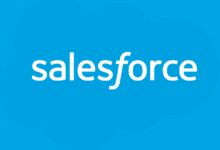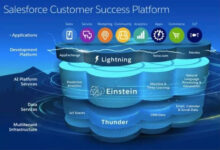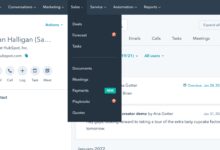CRM Software Cost: 7 Shocking Truths You Must Know in 2024
Thinking about CRM software cost? You’re not alone. Businesses everywhere are trying to figure out how much they’ll really pay—and what they’ll actually get. Let’s break down the real numbers, hidden fees, and smart strategies to save money—without sacrificing quality.
Understanding CRM Software Cost: What You’re Really Paying For

When you hear “CRM software cost,” it’s easy to assume it’s just a monthly subscription fee. But the reality is far more complex. CRM systems are not one-size-fits-all, and their pricing reflects a wide range of features, deployment models, and business needs. To truly understand the cost, you need to look beyond the sticker price and examine what drives the total investment.
What Is CRM Software and Why Does It Cost Money?
Customer Relationship Management (CRM) software helps businesses manage interactions with current and potential customers. It centralizes contact information, tracks sales activities, automates marketing, and provides analytics for better decision-making. Because of its powerful capabilities, CRM software requires significant development, maintenance, and support—hence the cost.
- Development and innovation in AI, automation, and integration drive up base prices.
- Ongoing customer support, security updates, and cloud hosting add to operational expenses.
- Vendors invest heavily in user experience, mobile access, and third-party integrations, which are reflected in pricing.
Types of CRM Systems and Their Price Implications
Not all CRM platforms are created equal. The type of CRM you choose directly affects the CRM software cost. There are three main categories:
- Operational CRM: Focuses on automating sales, marketing, and service processes. Typically mid-range in cost due to robust workflow tools.
- Analytical CRM: Emphasizes data analysis and customer insights. Often more expensive due to advanced reporting and AI-driven analytics.
- Collaborative CRM: Enhances communication across departments and with customers. Pricing varies based on integration depth and communication tools.
For example, Salesforce, a leader in analytical CRM, offers deep insights but comes with a higher price tag compared to simpler operational tools like HubSpot’s free CRM. Salesforce pricing starts at $25/user/month but can exceed $300/user/month for enterprise-grade features.
“The true cost of CRM isn’t just in the subscription—it’s in the time, training, and integration required to make it work.” — Gartner Research, 2023
CRM Software Cost Breakdown: What’s Included and What’s Not
Understanding the components of CRM software cost is essential for budgeting accurately. Many companies underestimate expenses because they focus only on the monthly license fee. In reality, the total cost of ownership (TCO) includes several layers.
Subscription Fees: The Obvious Part of CRM Software Cost
This is the most visible part of the cost—what you pay per user per month. Pricing models vary:
- Per-user pricing: Most common. You pay for each employee who accesses the system. For example, Zoho CRM starts at $14/user/month.
- Flat-rate pricing: Some vendors offer unlimited users for a fixed fee. Insightly offers a flat $77/month plan for small teams.
- Tiered pricing: More features unlock at higher tiers. HubSpot’s CRM starts free but jumps to $45/user/month for the Professional tier.
While per-user pricing seems straightforward, costs can spiral as your team grows. A company with 50 sales reps using a $50/user/month CRM will pay $30,000 annually—just for licenses.
Implementation and Setup Costs
Even cloud-based CRMs require setup. This includes data migration, system configuration, and workflow design. While some vendors offer free onboarding, others charge thousands.
- Basic setup: $500–$2,000 for small businesses.
- Mid-market implementation: $5,000–$20,000, often involving consultants.
- Enterprise deployments: Can exceed $100,000 with custom development and integration.
For instance, Microsoft Dynamics 365 implementation can cost between $10,000 and $50,000 depending on complexity. Microsoft’s official pricing page shows license costs but rarely includes implementation—something businesses must budget separately.
Hidden Costs That Inflate CRM Software Cost
These are the expenses that catch companies off guard:
- Training: Employees need time to learn the system. Internal training or paid courses can cost $500–$2,000 per team.
- Customization: Tailoring dashboards, fields, or workflows often requires developer help. Custom fields or automations can add $1,000+.
- Integration: Connecting CRM to email, calendar, ERP, or e-commerce platforms may need middleware like Zapier or MuleSoft, adding $100–$500/month.
- Support: Premium support plans cost extra. Salesforce’s Premium Support adds 18% to annual contract value.
- Upgrades: Moving to a higher tier often means renegotiating contracts and retraining staff.
A study by Nucleus Research found that hidden costs can increase the total CRM software cost by 150% over three years. That means a $10,000/year CRM could end up costing $25,000 when all factors are considered.
Factors That Influence CRM Software Cost
Several variables determine how much you’ll pay for a CRM. Understanding these helps you anticipate costs and choose wisely.
Number of Users and Scalability
The more users, the higher the cost—especially with per-user pricing. But scalability isn’t just about headcount. Some CRMs offer volume discounts, while others charge premium rates for large teams.
- Small teams (1–10 users): Often qualify for free or low-cost plans.
- Mid-sized teams (11–50): Enter the mid-tier pricing zone, where customization needs rise.
- Large enterprises (50+): May negotiate enterprise agreements, but face higher implementation and integration costs.
For example, Pipedrive charges $14.90/user/month for the Essential plan but offers a 10% discount for annual billing and larger teams. However, its lack of advanced reporting means businesses may need to upgrade sooner than expected.
Deployment Model: Cloud vs. On-Premise
Your deployment choice significantly impacts CRM software cost:
- Cloud-based (SaaS): Lower upfront cost, predictable monthly fees, and automatic updates. Most popular today. Examples: Salesforce, HubSpot, Zoho.
- On-premise: Higher initial investment (software license + hardware), ongoing IT maintenance, but more control. Examples: Oracle CRM, older SAP systems.
On-premise CRM can cost $10,000+ in initial licensing and require dedicated servers and IT staff. Cloud CRM shifts costs to operational expenses, making it easier to budget but potentially more expensive over a decade.
Feature Set and Functionality
More features = higher cost. But not all features are necessary for every business. Key cost-driving features include:
- Sales automation (lead scoring, pipeline management)
- Marketing automation (email campaigns, landing pages)
- Customer service tools (ticketing, knowledge base)
- AI-powered insights (forecasting, sentiment analysis)
- Advanced reporting and dashboards
For example, HubSpot’s free CRM lacks automation, but its $800/month Marketing Hub adds email workflows, A/B testing, and social media scheduling. That’s a 1,600% price jump for expanded functionality.
Top CRM Software Pricing Models Compared
To make an informed decision, let’s compare the pricing structures of leading CRM platforms. This will help you see how CRM software cost varies across vendors.
Salesforce: The Enterprise Leader
Salesforce dominates the high-end market with powerful features but complex pricing.
- Essentials: $25/user/month (basic CRM)
- Professional: $75/user/month (sales & service automation)
- Enterprise: $150/user/month (customization, API access)
- Unlimited: $300/user/month (24/7 support, advanced security)
Add-ons like Einstein AI or Marketing Cloud can double the cost. Implementation often requires third-party consultants, adding $15,000–$50,000. Salesforce is powerful but demands a serious budget.
HubSpot: The Scalable All-in-One Platform
HubSpot offers a freemium model that’s attractive to startups.
- Free CRM: $0 (contact management, basic automation)
- Starter: $45/month (small teams, limited features)
- Professional: $450–$800/month (full marketing, sales, service hubs)
- Enterprise: $1,200+/month (advanced automation, reporting)
While the free version is generous, scaling up becomes expensive. A full HubSpot stack for 10 users can exceed $10,000/year. However, its ease of use and integration make it a favorite for mid-market companies.
Zoho CRM: The Budget-Friendly Powerhouse
Zoho offers exceptional value, especially for small to mid-sized businesses.
- Free Edition: $0 (up to 3 users)
- Standard: $14/user/month (email integration, automation)
- Professional: $23/user/month (custom views, forecasting)
- Enterprise: $40/user/month (territory management, audit trails)
Zoho also offers a flat $45/month plan for up to 5 users, making it one of the most cost-effective options. With deep integration across Zoho’s 50+ apps, it’s ideal for businesses already in the Zoho ecosystem. Zoho CRM pricing is transparent and flexible.
Free CRM Options: Are They Worth It?
Many vendors offer free CRM software, but are they truly free? Let’s explore the reality behind “free” and whether they’re a viable long-term solution.
Top Free CRM Tools and Their Limitations
Several reputable CRMs offer free tiers:
- HubSpot CRM: Free forever for unlimited users. Includes contact, deal, and task management. Lacks advanced automation and reporting.
- Zoho CRM Free Edition: Up to 3 users. Good for startups but limited in customization.
- Bitrix24: Free for unlimited users with basic CRM, but storage capped at 5GB.
- Insightly: 2-week free trial, then starts at $29/user/month.
While these tools are great for testing or very small teams, they often lack the scalability and support needed for growth.
When Free CRM Makes Sense
Free CRM is ideal in specific scenarios:
- Startups with limited budgets
- Solopreneurs or freelancers
- Short-term projects or pilot programs
- Teams under 5 people with simple needs
However, as your business grows, you’ll likely hit feature ceilings. Migrating data from a free CRM to a paid one can be time-consuming and costly.
The Hidden Cost of Free CRM
“Free” doesn’t mean zero cost. Consider:
- Time spent managing limitations (e.g., manual data entry)
- Lost opportunities due to lack of automation
- Security and compliance risks with basic tools
- Vendor lock-in when switching becomes difficult
A free CRM might save $500/year but cost $10,000 in lost productivity. As the saying goes, “The cheapest CRM is the one that helps you close more deals.”
How to Reduce CRM Software Cost Without Sacrificing Quality
You don’t have to overspend to get a powerful CRM. Smart strategies can cut costs while maintaining functionality.
Negotiate with Vendors and Leverage Discounts
Never accept the listed price. Most vendors offer discounts for:
- Annual billing (save 10–20%)
- Nonprofits and educational institutions
- Long-term contracts
- Bundle purchases (CRM + marketing automation)
For example, Salesforce offers up to 30% off for nonprofits. Zoho gives discounts for multi-year commitments. Always ask: “What’s your best price for a 3-year contract with 20 users?”
Choose the Right Plan for Your Needs
Don’t overbuy. Many businesses pay for features they never use. Assess your actual needs:
- Do you need marketing automation?
- Is AI forecasting critical?
- How many users truly need full access?
A sales team might only need the Professional tier, while customer service uses a lighter plan. Tiered user roles can reduce costs significantly.
Use Open Source or Low-Code Alternatives
For tech-savvy teams, open-source CRM can be a game-changer.
- SuiteCRM: Free, open-source fork of SugarCRM. Full control, no licensing fees.
- Dolibarr: Open-source ERP and CRM combo.
- WordPress + WP CRM System: Low-cost option for small businesses.
While these require more technical skill, they eliminate recurring fees. Hosting and maintenance cost $100–$500/year, a fraction of commercial CRM costs.
Future Trends Impacting CRM Software Cost
The CRM landscape is evolving. New technologies and market shifts are reshaping pricing models and value propositions.
AI and Automation: Driving Up Costs or Adding Value?
AI is becoming standard in CRM. Features like predictive lead scoring, chatbots, and sentiment analysis are now common—but they come at a price.
- Salesforce Einstein adds $50/user/month.
- HubSpot’s AI tools are bundled in higher tiers.
- Zoho CRM’s Zia AI is included in most plans, offering better value.
While AI increases CRM software cost, it also boosts ROI. Nucleus Research found AI-powered CRM delivers $8.50 return for every $1 spent.
The Rise of Usage-Based Pricing
Some vendors are moving away from per-user models to usage-based pricing.
- Charge based on number of contacts, emails sent, or API calls.
- More flexible for seasonal businesses.
- Can be cheaper for low-activity teams.
For example, Sendinblue (now Brevo) offers CRM with email pricing based on volume. This model is gaining traction as businesses demand more flexibility.
Consolidation and All-in-One Platforms
Companies like HubSpot and Zoho are bundling CRM with marketing, sales, and service tools. While the upfront cost is higher, the long-term value can be greater due to reduced integration costs and unified data.
- HubSpot’s Suite costs $3,200/year but replaces multiple tools.
- Zoho One includes CRM, email, finance, and HR for $37/user/month.
These platforms reduce the total cost of ownership by minimizing the need for third-party apps.
What is the average CRM software cost?
The average CRM software cost ranges from $12 to $100 per user per month. For a small team of 10, that’s $1,440 to $12,000 annually. Enterprise solutions can exceed $300/user/month, totaling over $36,000 per user per year.
Is there a truly free CRM?
Yes, several CRMs offer free tiers (e.g., HubSpot, Zoho, Bitrix24). However, they often limit users, features, or storage. Truly free for unlimited use is rare, and “free” may come with hidden costs like limited support or scalability.
How can I reduce my CRM software cost?
You can reduce CRM software cost by negotiating annual contracts, choosing the right feature tier, using open-source alternatives, or bundling services. Avoid over-provisioning users and regularly audit your usage to downgrade unused features.
What is included in CRM software cost?
CRM software cost typically includes subscription fees, user licenses, basic support, and cloud hosting. However, implementation, training, customization, integration, and premium support are often extra. Always calculate total cost of ownership (TCO) over 3–5 years.
Which CRM offers the best value for money?
Zoho CRM and HubSpot are often cited as offering the best value. Zoho provides robust features at low prices, while HubSpot’s free CRM and scalable tiers make it ideal for growing businesses. For enterprises, Salesforce remains the gold standard despite higher costs.
Understanding CRM software cost is about more than just the monthly bill. It’s about evaluating total value, anticipating hidden fees, and choosing a solution that scales with your business. From free tools for startups to enterprise platforms with AI, the right CRM can drive growth—but only if you budget wisely. By analyzing user needs, deployment models, and long-term ROI, you can make a smart investment that pays off for years to come.
CRM software cost – CRM software cost menjadi aspek penting yang dibahas di sini.
Further Reading:



